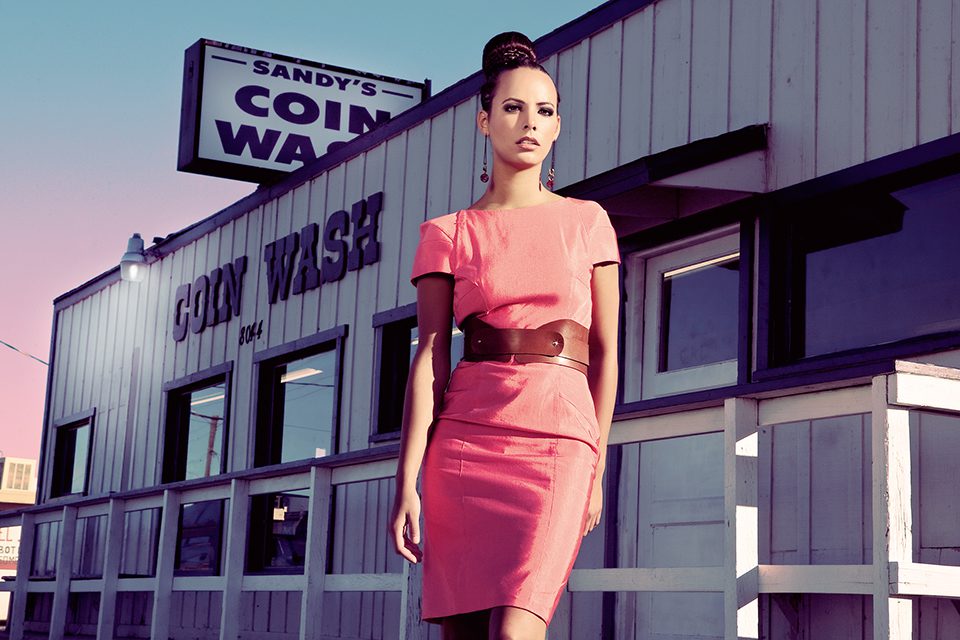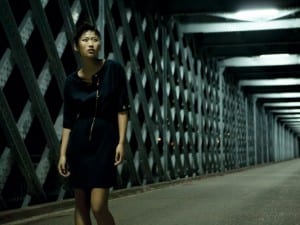To stand up in the world of fashion photography takes hard work, skill and endless amounts of creativity. Portuguese-born, Pedro Janeiro, is a rising-star in this genre.
Fashion photography remains one of the most desirable disciplines. Holding this position provokes debate when discerning the relationship with other photographic genres. Because of its commercial nature, staged sets, controlled lighting and overall aesthetic, in the pecking order of photographic image-making, this type of photography attracts less attention in the gallery and museum circuit, not being recognised as “serious” to the same degree as other photographic sub-genres. However, for mass appeal, these images withstand – think about the lasting endurance of Richard Avedon’s Brigitte Bardot (1959), Corinne Day’s young Kate Moss (1990), and Rankin’s Debbie Harry (1998).
Portraying a set of values, a luxurious lifestyle and an ideal; its messages are often criticised. Paradoxically, because of the image’s position in popular culture, photographers have to work harder, and equally audiences are wiser. The overt nature of consumerism means that society is more commercially aware, and therefore fashion images need to transcend aesthetics in order to become iconic and resonate within the larger cultural whole.
Pedro Janeiro (b. 1982) is one of Portugal’s latest exports. As a fashion photographer, he aligns himself more within the confines of cinema. His seamlessly beautiful images could be stills from a film set and often present a stark contrast between location and beauty. Speaking an untold narrative, his pictures imbue an exciting and imagined world. Janeiro’s love of the cinematic is apparent. Upon visiting his website, a film begins – a beautiful woman, a classic car – drama and excitement. However, as the film continues, Janeiro is on location at work; like his models, he is setting the stage, creating a persona signifying that the artist and his work are one.
Janeiro’s clients include FHM and Vogue (Portugal). It’s only a matter of time before his images are everywhere, and being one of Portugal’s rising-stars, we caught up with him to find out more about his work and future plans.
In conversation with Pedro Janeiro
When and how did you first become interested in photography?
I was drawn to photography from an early age. I always had some sort of connection with art, because Vila Nova de Cerveira, the town where I grew up had a major biennial. If I remember correctly, my first picture was taken at the beach on a sunny day with a disposable camera; I was probably five or six years old. As I got older, my interest in photography grew, and I continued to experiment with the medium, but it wasn’t until I was a teenager that I realised it was my dream to become a photographer. Later I studied at IPF (Portuguese Institute of Photography), and then I started working as an assistant to several photographers to improve my skills, and finally became a professional photographer.
The world is saturated with editorial/fashion images, they have become “familiar” to viewers. As a fashion photographer, how does your work stand out?
With the development of technology, from digital cameras and post-production software, to the Internet and online magazines, the world of photography has been flooded by people who are pursuing a dream. Digital photography has opened many doors, and the Internet has become a fantastic way to reach more audiences, so I think its integration into the medium facilitates rather than hinders it. However, as a result, we’ve had an increase in the volume of fashion photography. With regards to my work, I always try to make creative images, with quality production, editing and lighting. I have even tried whenever possible to introduce a cinematic element to the images. So all these factors together give an overall polished effect, and grab people’s attention.
The fashion and advertising world can be associated with the artificial – how would you agree or disagree with this statement? Is there more to it than the glamour?
Yes, indeed the fashion world has always been associated with the artificial. A fashion background is a business, and as such, the images are made for a commercial purpose. However, I think there is an element of it that happens in a more artistic way. Regardless of whether it’s painting, photography or reportage, we know that images are sometimes manipulated or even staged for the purpose of creating an end result that appeals to people.
In a fine art context, your images tell a story, what’s the narrative structure involved?
I like to think that I can create images that cause people to imagine the before and after of the moment. The creation of cinematic photographs is one of my goals, and really signifies the role that cinema plays in my life and overall work.
Do you feel fashion photography and editorial images are mass produced, and how do you feel this affects the notion of the individual in society?
I don’t think that it’s only fashion photography that’s responsible for the mass production of images today. However, I think all these images leave a lasting legacy, and I see it as a positive rather than a negative, because it allows constant access to works by other photographers, and we can gather inspiration and learn from this.
What’s the definition of beauty for you?
Beauty can be interpreted in many ways, but photography has to be aesthetically beautiful, graphic, with enhanced colours. It should be an image that we never forget, and it should also transmit sentiment.
Which photographers inspire you and why?
I appreciate many photographers, and I am influenced by Annie Leibovitz because of the feeling that characterises her portraits. Eugenio Recuenco is another inspiration because of his spectacular scenery. The colour and strong imagery of David LaChapelle, and the composition of Joel-Peter Witkin’s work also moves me, as well as Mario Testino, Greg Kadel and Jean-Baptiste Mondino.
Fashion photography is a collaboration between the photographer and model, how do you balance this relationship to get the results that you want?
The model is the most important part of any photo shoot. Their experience is crucial to the camera. Of course stylists, hairdressers and make-up artists are undoubtedly important too. Only when all these elements come together is it possible for a photographer to capture an excellent image. With regards to the lighting and overall image framework, the combined knowledge of all the collaborators is essential to get results.
In terms of your photographic style, would you say there’s a common mood or theme?
As for my photographic style, I don’t pursue a common theme. My ambition is to create striking images, and if possible to find interesting and distinct locations to stage my shoots. I try to escape the banal when I take photographs.
Tell me about your choice to shoot sometimes in colour or black and white – do you have a preference?
Black and white photography makes the image that little bit more dramatic, sentimental or even expressive. Every case is different, but I always like to shoot in black and white. Sometimes colour is an important factor, but it’s up to the photographer to understand what best fits in each image.
What do you have coming up? What’s next for you?
Right now, I have some projects in hand, working in editorial, and I have plans for the future that may alter the direction of my photographic career. I’d like to try and enter the world of cinema as a Director of Photography. That would be a dream come true.
To find out more about Pedro Janeiro visit www.pedrojaneiro.com.
Cherie Federico










